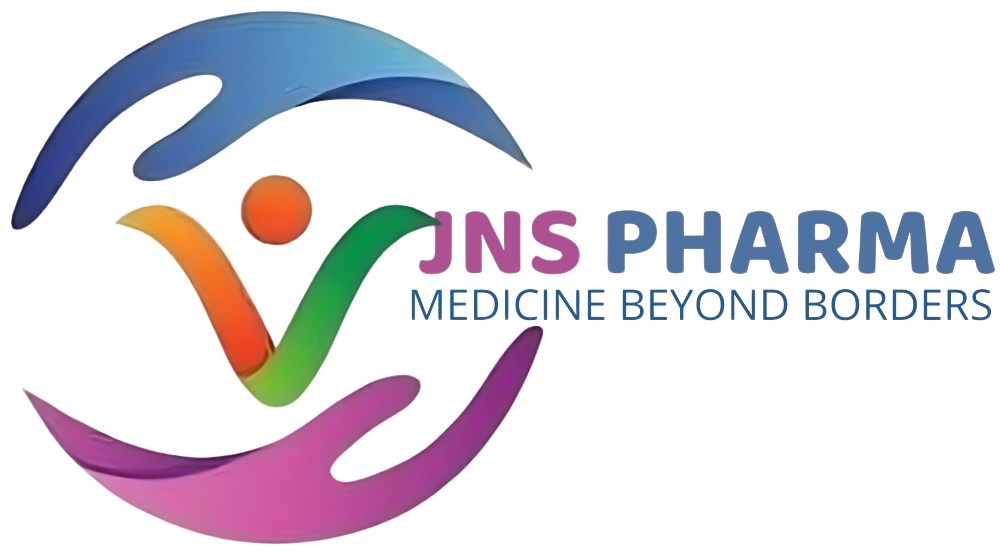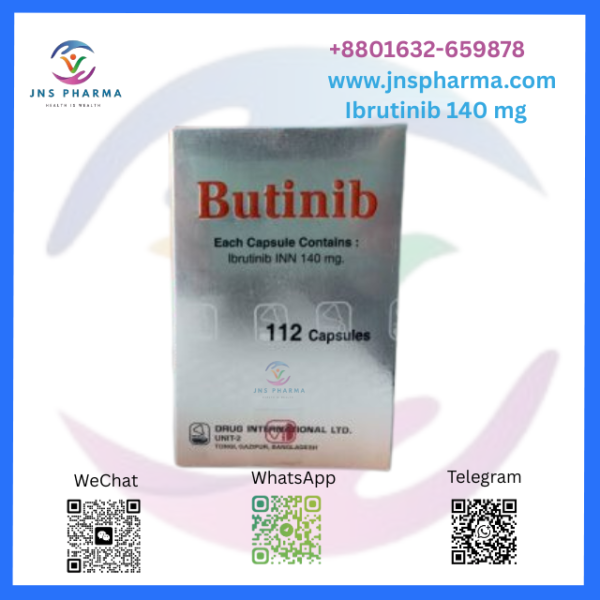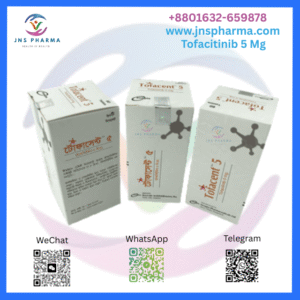Don't miss our holiday offer - up to 50% OFF!
Butinib 140 mg (Ibrutinib)
Butinib 140 mg, containing the active component Ibrutinib, is an oral targeted drug for the operation of a variety of blood cancers, including chronic lymphocytic leukemia( CLL), mantle cell carcinoma (MCL), Waldenström’s macroglobulinemia (WM), and MZL, also known as borderline zone cancer. Butinib belongs to the order of medicines appertained to as Bruton’s tyrosine kinase( BTK) impediments. It works by blocking signals cancer cells need to grow and survive. Ibrutinib has converted remedy for a variety of B- cell cancers with its targeted and lower poisonous than conventional chemotherapies profile.
Mechanism of Action
Ibrutinib functions by irreversibly blocking the Bruton’s tyrosine kinase( BTK), an enzyme that plays a part in the B- cell receptor( BCR) signaling waterfall. This waterfall is needed for cancerous B- cell survival, growth, and migration. With the leaguer of BTK, Ibrutinib disrupts these pivotal processes, leading to
Reduced cancer cell proliferation
Increased cancer cell mortality, adhesion displacement, and excrescence cell migration
This picky action renders Butinib widely active against B- cell malice and reserves normal,non-B cells.
Indications
Butinib 140 mg is approved and extensively used for the treatment of different hematologic malice, similar as habitual Lymphocytic Leukemia( CLL)/ Small Lymphocytic Carcinoma( SLL)
Both as original-line and as regressed refractory remedy.
Mantle Cell Lymphoma( MCL)
In cases that have entered at least one previous remedy.
Waldenström’s Macroglobulinemia( WM)
generally used as single agent or in combination with rituximab.
Borderline Zone Carcinoma( MZL)
In regressed/ refractory cases after previous treatment with ananti-CD20-directed remedy.
Habitual Graft- versus- Host complaint( cGVHD)
In cases that have failed previous systemic remedy.
Each suggestion can have a varied dosing authority or in combination with other specifics depending on the clinical situation.
Dosage and Administration
Butinib is available as 140 mg oral tablets and is generally given once a day, with or without food. The standard boluses vary grounded on the complaint being treated
CLL/ SLL/ WM 420 mg daily( i.e., three 140 mg tablets)
140 mg in four doses or 560 mg of MCL each day; cGVHD 420 mg per day
The tablets are to be swallowed with water total and shouldn’t be crushed, masticated, or broken. Lozenge would need to be acclimated in cases with liver complaint or in the event of specific side effects.
Side Effects
Indeed, though Butinib is largely permitted, as with any cancer treatment, side effects can arise. Some of the common side effects are:
Diarrhea
Fatigue
Nausea
Pain in the muscles or joints
Bruising
Rash
Infection of the upper respiratory tract
Less common but serious side effects might be
Bleeding diseases( e.g., gushing internal bleeding)
Atrial fibrillation or other arrhythmias
Hypertension
Alternate malice at primary spots
Infection( bacterial, viral, or fungal)
Cytopenias
Monitoring with laboratory tests, blood pressure dimension, and cardiac evaluation is recommended in cases on Butinib, particularly those with previous cardiovascular history.
Precautions and Warnings
Before starting Butinib 140 mg, the following should be taken into account threat of bleeding, Cases on anticoagulants or having a bleeding complaint should use Butinib cautiously.
Threat of infection. Due to its immunosuppressive effect, the case is at advanced threat for infection; prophylaxis may be needed.
Cardiac conditions, Hypertensive or unrhythmic cases should be nearly cover.
Liver impairment: Cure revision is recommend in moderate to severe liver dysfunction.
Medicine relations Ibrutinib is metabolize by CYP3A4 enzymes. Strong CYP3A4 inhibitors (like clarithromycin and ketoconazole) and corrupters (like rifampin) drastically change Butinib conditions and may result in caution or cure variations.
Drug Interactions
As Butinib is metabolize by the liver enzyme CYP3A4, medicines impacting this enzyme can also impact the way Butinib is metabolized in the body. Some exemplifications are
CYP3A4 impediments( can increase Ibrutinib situations)
Ketoconazole
Clarithromycin
Ritonavir
CYP3A4 corrupters (may reduce Ibrutinib’s efficacy)
Rifampin
Carbamazepine
Phenytoin
It’s pivotal to inform the healthcare provider of all specifics, both untoward and herbal supplements, before starting Butinib.
Use in Special Populations
During gestation and lactation Ibrutinib can harm the future fetus and mustn’t be use in gestation or lactation. Effective contraception is need during treatment and for at least 1 month after the last dose was take.
Pediatric use. The safety and efficacity in pediatric cases haven’t been establish.
Senior use Aged people are more likely to witness lateral effects, especially atrial fibrillation and infection.
Storage and Handling
Keep Butinib 140 mg tablets at 20 °C to 25 °C( room temperature).
Store it in the original package, out of direct sun and humidity.
Keep out of children’s reach.
Conclusion
Butinib 140 mg (Ibrutinib) is a corner medicine in managing certain B- cell malice. Its picky medium of action offers effective complaint control with an respectable side effect profile in the maturity of cases. With proper monitoring and probative remedy, Butinib improves survival and quality of life dramatically in the cases with habitual lymphocytic leukemia, mantle cell carcinoma, and other conditions. For any cancer remedy, personalized planning and ongoing monitoring by a doctor are important to achieve the stylish results.







Reviews
There are no reviews yet.